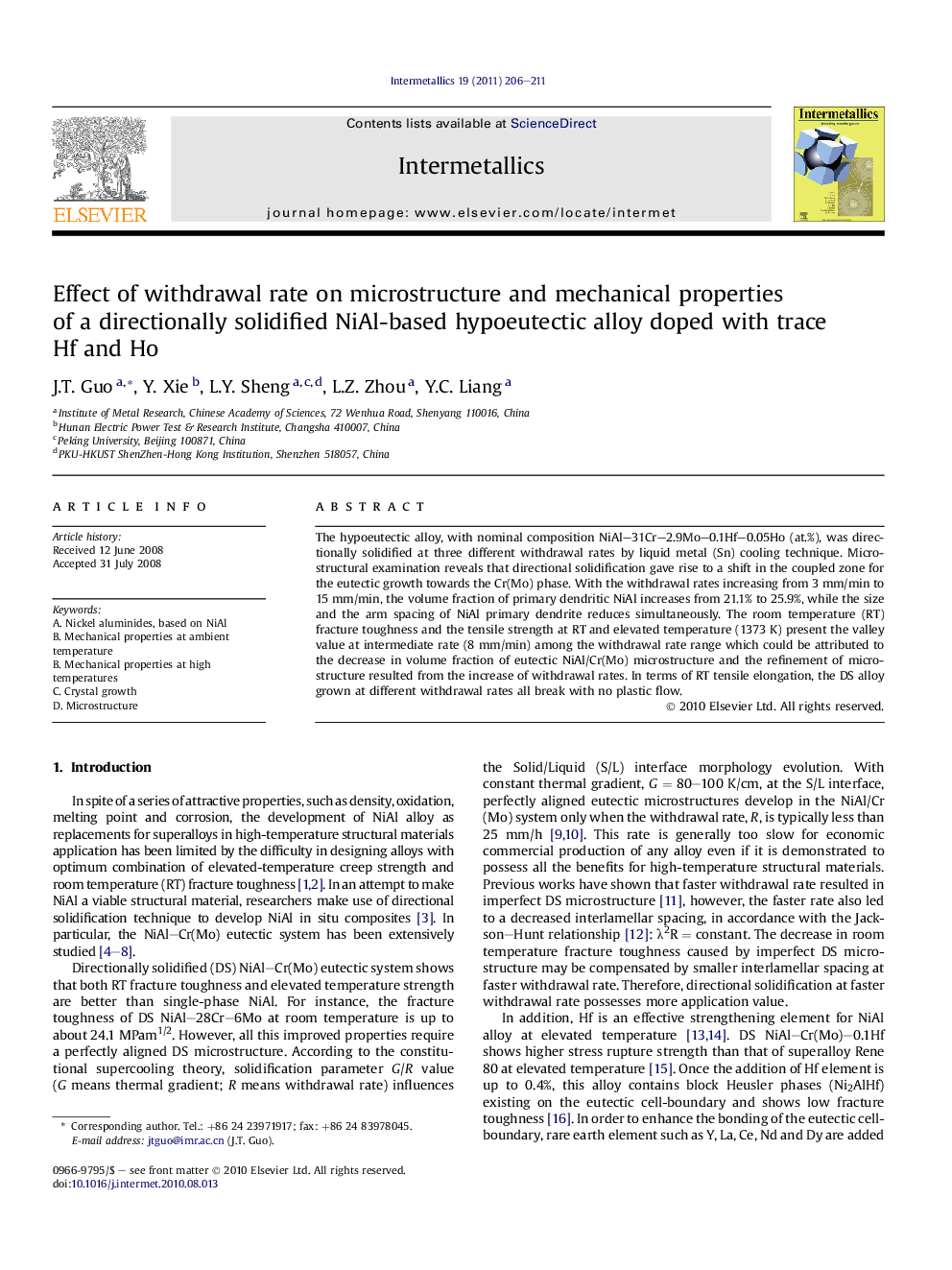| Article ID | Journal | Published Year | Pages | File Type |
|---|---|---|---|---|
| 1601110 | Intermetallics | 2011 | 6 Pages |
The hypoeutectic alloy, with nominal composition NiAl–31Cr–2.9Mo–0.1Hf–0.05Ho (at.%), was directionally solidified at three different withdrawal rates by liquid metal (Sn) cooling technique. Microstructural examination reveals that directional solidification gave rise to a shift in the coupled zone for the eutectic growth towards the Cr(Mo) phase. With the withdrawal rates increasing from 3 mm/min to 15 mm/min, the volume fraction of primary dendritic NiAl increases from 21.1% to 25.9%, while the size and the arm spacing of NiAl primary dendrite reduces simultaneously. The room temperature (RT) fracture toughness and the tensile strength at RT and elevated temperature (1373 K) present the valley value at intermediate rate (8 mm/min) among the withdrawal rate range which could be attributed to the decrease in volume fraction of eutectic NiAl/Cr(Mo) microstructure and the refinement of microstructure resulted from the increase of withdrawal rates. In terms of RT tensile elongation, the DS alloy grown at different withdrawal rates all break with no plastic flow.
